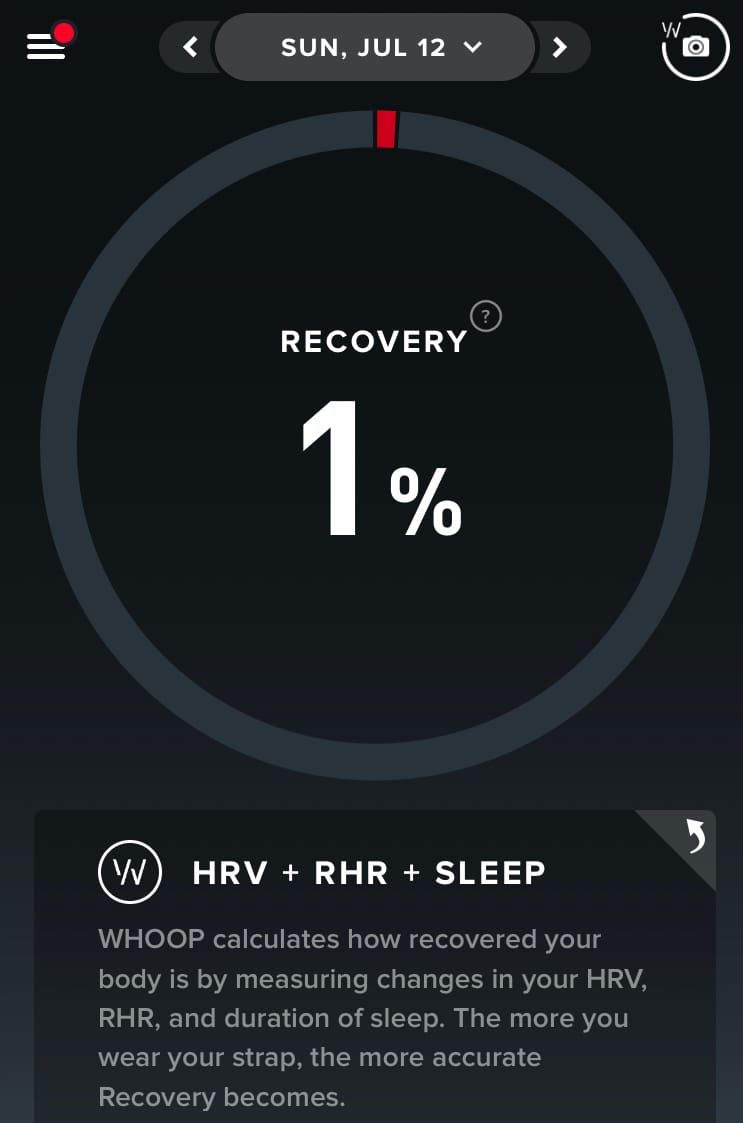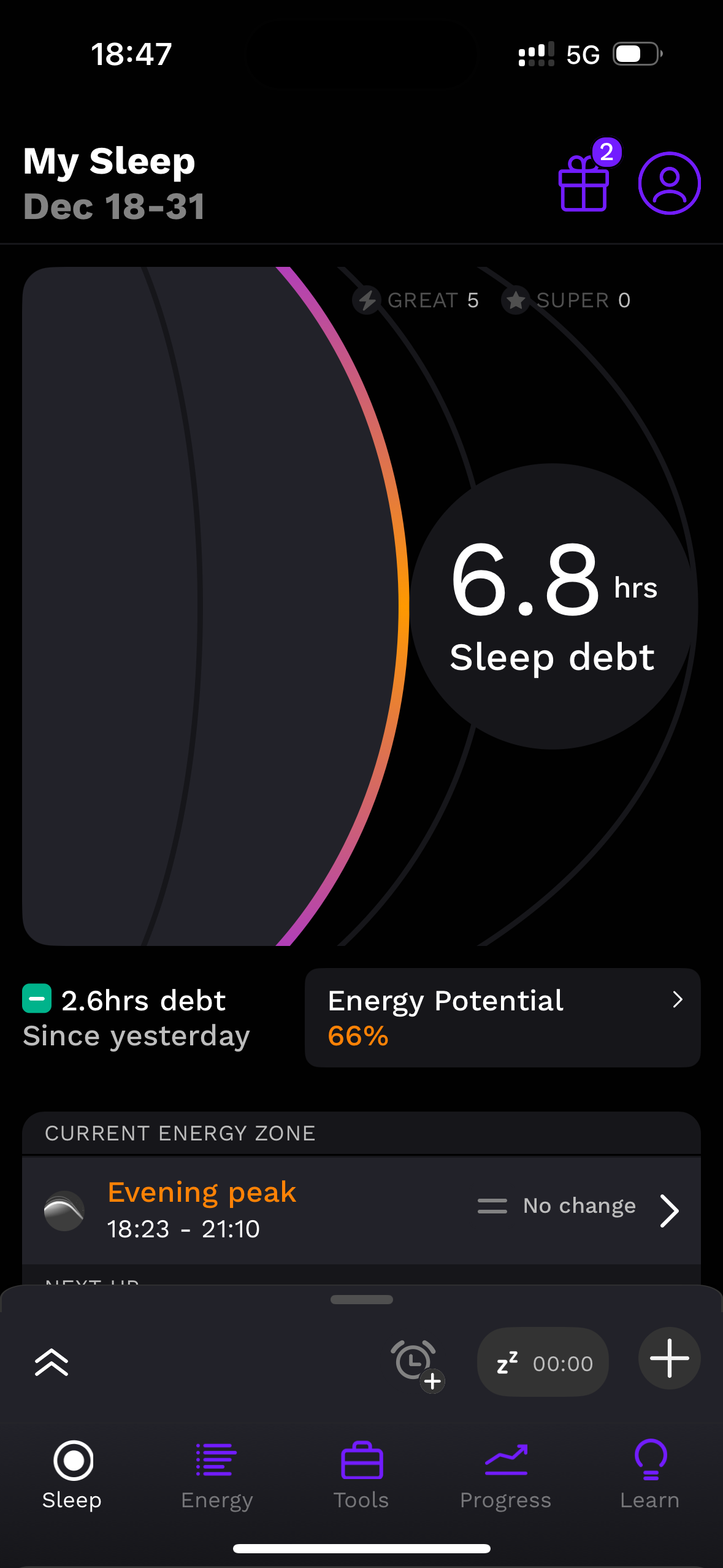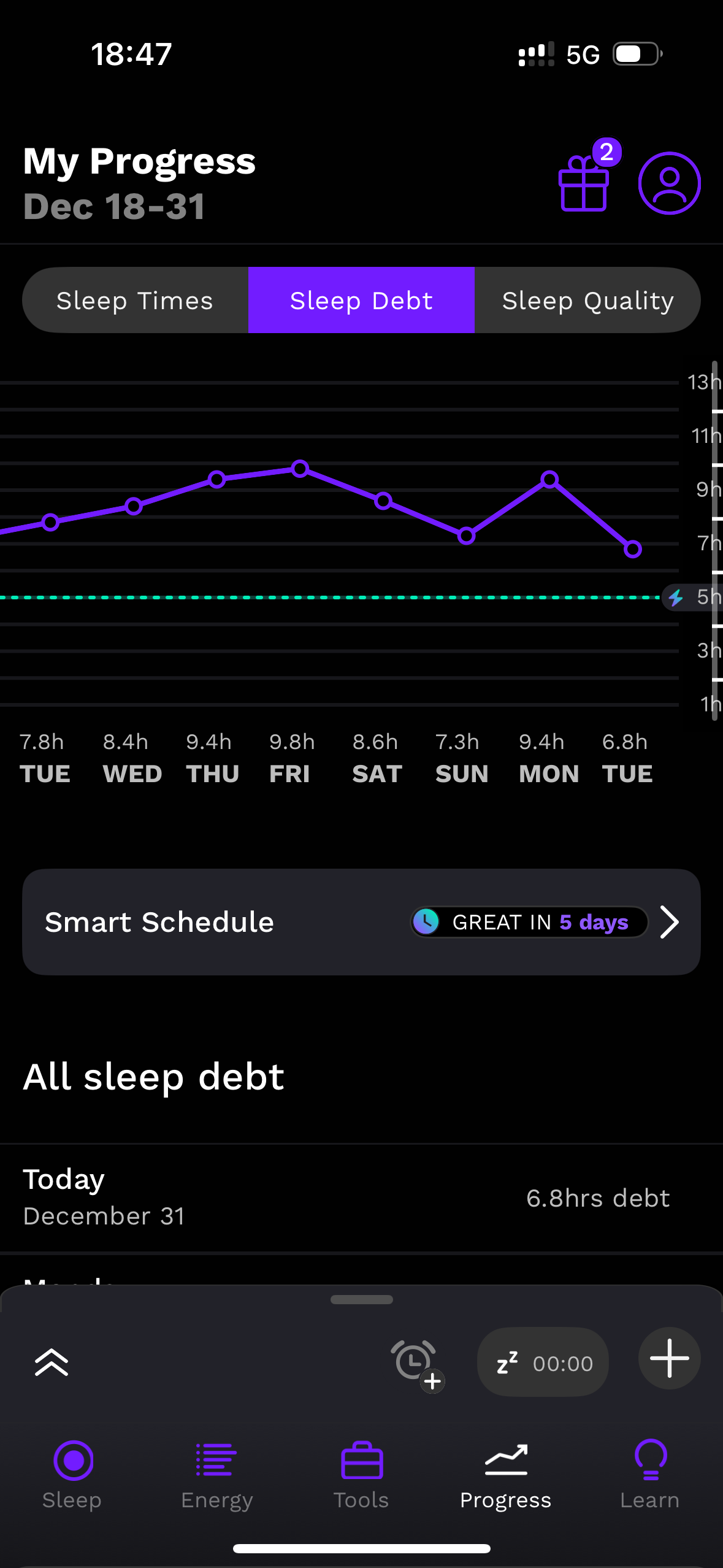Why I Ditched Whoop and Oura for a Single Metric: Sleep Debt

For three years, I was deep in the world of biometric tracking, Oura then Whoop were my constant companion. For 3 years I had a steady feed of data about my body and performance. Heart rate variability (HRV), resting heart rate (RHR), blood oxygen, respiratory rate, and skin temperature, recovery scores, activity strain—all meticulously logged and analysed.
Yet, instead of optimising my health, I found myself drowning in a sea of metrics. It was overwhelming, often disheartening, and ultimately unsustainable.
About six months ago, I decided to take throw caution to the wind: I abandoned all my trackers in favor of monitoring just one metric—sleep debt.
This singular focus has transformed how I approach health and productivity. Here’s why I made the switch and why it’s been one of the best decisions I’ve made.
The Downside of Data Overload
The promise of biometric trackers is alluring. I was a disciple for years, joining the waiting list for Oura and Whoop all the way back in 2019. Wearables make a big claim to help unlock a deeper understanding of your body and help you make better decisions.
And while I believe the claim is accurate, there are trade offs:
- Information Overload: Tracking multiple metrics daily became exhausting. Instead of simplifying my health journey, it complicated it.
- Negative Feedback Loops: On days when my recovery scores were low or my HRV was off, I’d feel bad about myself—even if I felt fine physically. It created a mindset where I relied on the device to tell me how to feel.
- Limited Control: Many metrics are influenced by factors beyond my immediate control. Stress, genetics, and even the weather can impact them, leaving me feeling powerless.
Ultimately, the trackers became more of a mental burden than a helpful tool. Read about reducing cognitive load.


Enter Sleep Debt
When I discovered the Rise Science app (founded by Dr. Jeff Kahn and Dr. Leon Sasson) and its focus on sleep debt, something clicked. Sleep debt measures the cumulative amount of sleep you’ve missed relative to your body’s needs over a recent period (typically 14 days). Research shows that keeping sleep debt low—ideally under five hours—can significantly improve cognitive performance, mood, and overall health. Learn more about the impact of sleep debt. Here’s a study that highlights the detrimental effects of sleep debt on performance and recovery.


What drew me to sleep debt was its simplicity. Unlike the myriad metrics from Whoop and Oura, sleep debt as a metric is:
- Actionable: If your debt is high, the solution is clear: get more sleep.
- Effective: Sleep is foundational to every aspect of health, from immunity to mental clarity.
- Empowering: It focuses on something I can directly control.
Since switching to this single metric, I’ve noticed a profound shift. My mental clarity has improved, my productivity is up, and—most importantly—I feel in control of my health. By removing the noise of unnecessary data, I’ve been able to focus on what truly matters. Explore more about the foundational role of sleep.
Final Thoughts
If you’ve been feeling overwhelmed by the barrage of metrics from your health devices, consider focusing on sleep debt. It’s simple, actionable, and incredibly impactful. Remember: more data isn’t always better. Sometimes, less is more.
For me, ditching the trackers wasn’t about giving up on health optimisation. It was about finding a better, simpler way to achieve it. And in my experience, focusing on sleep debt has been the ultimate game-changer.